The healthcare sector has undergone a digital metamorphosis over recent years, mirroring the wider transformation seen across various industries. With the advent of healthcare applications, individuals now have an arsenal of resources at their fingertips—ranging from medical information and health record management to seamless patient-provider communication. These digital tools not only aim to foster a more informed and connected healthcare community but also offer a plethora of opportunities for entrepreneurs and healthcare providers. However, for these applications to continue thriving and evolving, establishing a robust monetization strategy is paramount.
This article delves into 10 prevalent healthcare app monetization models, illuminating their working mechanisms, pros, cons, and real-world applications in the healthcare app domain.
Also check: Best Healthcare Software Development Companies
- Healthcare Technology Recent Trends and Forecasts
- Quick Summary of 10 Ways How Healthcare Apps Make Money
- Detailed List of 10 Best Monetization Strategies for Healthcare Apps
- 1. Freemium Model: An Enticing Entry Point with a Hint of Premium
- 2. Subscription Model: A Commitment to Value and Engagement
- 3. The Advertisement Model: Monetizing Eyeballs and Clicks
- 4. The Pay Per Download Model: An Upfront Commitment to Value
- 5. In-App Purchases
- 6. Sponsored Content
- 7. Affiliate Marketing
- 8. Data Monetization
- 9. Hybrid Models
- 10. Healthcare E-commerce
- How to monetize Healthcare Apps?
- Final Words
Healthcare Technology Recent Trends and Forecasts
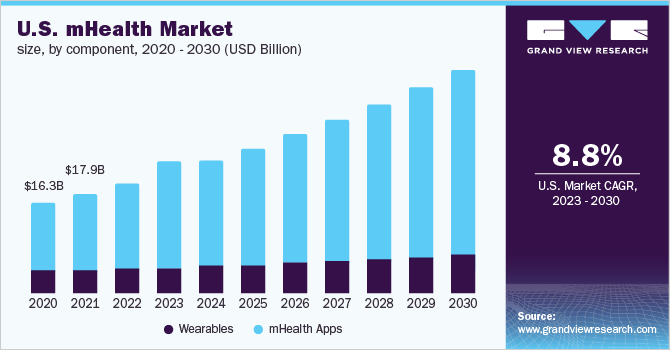
The healthcare app market has been experiencing significant growth, and various reports offer insights into the statistics and forecasts for this sector. Here are some key findings from multiple sources:
- The health sector’s revenue is forecasted to grow from $8.21 billion to $35.7 billion by 2030. In 2022, Flo was the most downloaded app with 35 million downloads, while MyFitnessPal had 200 million users when it was sold by Under Armour in 2020.
- The global mHealth apps market, which encompasses mobile technology for sharing and monitoring health information, was valued at $56.26 billion in 2022 and is projected to grow to $861.40 billion by 2030, with a compound annual growth rate (CAGR) of 40.2%.
- In another report, the global mHealth apps market was valued at $43.5 billion in 2022, with a CAGR of 11.6% expected from 2023 to 2030.
- The broader mHealth market, which includes the use of smart devices and wearables for personal health and fitness, was valued at $56.8 billion in 2022 and is expected to grow with a CAGR of 10.8% from 2023 to 2030.
- Focusing on women’s health apps, the market was valued at $2.88 billion in 2021 and is projected to reach $18.25 billion by 2031, growing at a CAGR of 20.1% during the period from 2022 to 2031.
Also read: Smart Square HMH: Revolutionizing Healthcare Management and Staffing Solutions
Quick Summary of 10 Ways How Healthcare Apps Make Money
Here, various monetization strategies are explored alongside examples to provide a comprehensive view of how healthcare apps can generate revenue.
| Monetization Strategy | Definition | Example |
|---|---|---|
| In-App Purchases | Buying additional features within the app | Fitbit |
| Sponsored Content | Third-party paid content within the app | Healthline |
| Affiliate Marketing | Promoting products for a commission | MyFitnessPal |
| Data Monetization | Selling or leveraging user data | 23andMe |
| Hybrid Models | Combining various monetization strategies | N/A |
| Subscription Models | Users pay a recurring fee for app services | Headspace |
| Freemium Models | Offering basic services for free, premium for a fee | Calm |
| Advertising | Displaying third-party ads within the app | WebMD |
| Donation Models | Requesting donations from users | Wikipedia (Medical Section) |
| Licensing | Licensing app technology or content to others | Epocrates |
| Partnerships | Forming revenue-sharing partnerships with other entities | Red Cross Blood Donor App |
| E-commerce | Selling products or services directly through the app | Zocdoc (selling appointments) |
You may also like reading: How can mobile health apps improve the healthcare industry?
Detailed List of 10 Best Monetization Strategies for Healthcare Apps
As healthcare apps burgeon, so does the need for effective monetization strategies to sustain and escalate the growth trajectory. This segment elucidates the intricacies, merits, and demerits of best monetization models, alongside real-world examples illustrating their application in the healthcare app sphere.
1. Freemium Model: An Enticing Entry Point with a Hint of Premium

The Freemium model is akin to offering a tantalizing appetizer that whets the user’s appetite for the sumptuous main course that lies ahead. Under this model, healthcare apps provide core functionalities free of charge, while reserving advanced or premium features for paying customers. This approach serves a dual purpose—it attracts a large user base due to the zero cost of entry and simultaneously showcases the potential value of the premium offerings.
Benefits:
- Broad User Base: With no barriers to entry, a myriad of users can access the basic functionalities of the app, paving the way for widespread adoption and brand recognition.
- Teaser of Premium Features: The free version acts as a teaser, enticing users to explore the premium features that promise an enhanced user experience.
Drawbacks:
- Slow Monetization: The conversion rate from free to paid users is often a slow and uncertain journey, making the revenue generation less predictable.
- Low Conversion to Paid Versions: Only a small fraction of users usually make the leap to the premium version, posing a challenge to sustainable monetization.
Real-world Application:
Take MyFitnessPal for instance. This health and fitness app offers core tracking features for free, allowing users to monitor their diet and exercise. However, for a more personalized experience, users can opt for the premium version which provides detailed nutritional insights, customized workout plans, and an ad-free interface.
You may also like: Healthcare Software Development Cost: Exact Price Tag
2. Subscription Model: A Commitment to Value and Engagement

Unlike the Freemium model, the Subscription model entails a fixed fee in exchange for unrestricted access to the app’s features and content. This model hinges on providing continual value that justifies the recurring expense, fostering a long-term relationship between the app and the user.
Benefits:
- Steady Revenue Stream: Subscription fees ensure a predictable and steady revenue stream, which is crucial for the sustained growth and improvement of the healthcare app.
- Long-term User Engagement: By delivering consistent value, healthcare apps can foster a loyal user base that remains engaged over a longer duration.
Drawbacks:
- High Competition: The market is rife with competing subscription-based apps, and standing out in the crowded marketplace is a formidable challenge.
- Perceived High Cost by Users: Some users might find the recurring expense off-putting, especially if they are unsure of the long-term value proposition.
Real-world Application:
A notable example is Headspace, a wellness app offering a plethora of mindfulness exercises. Through a subscription-based model, Headspace provides an extensive library of guided meditations, sleep sounds, and mindfulness courses, underscoring the value of investing in one’s mental health in a stressful world.
3. The Advertisement Model: Monetizing Eyeballs and Clicks
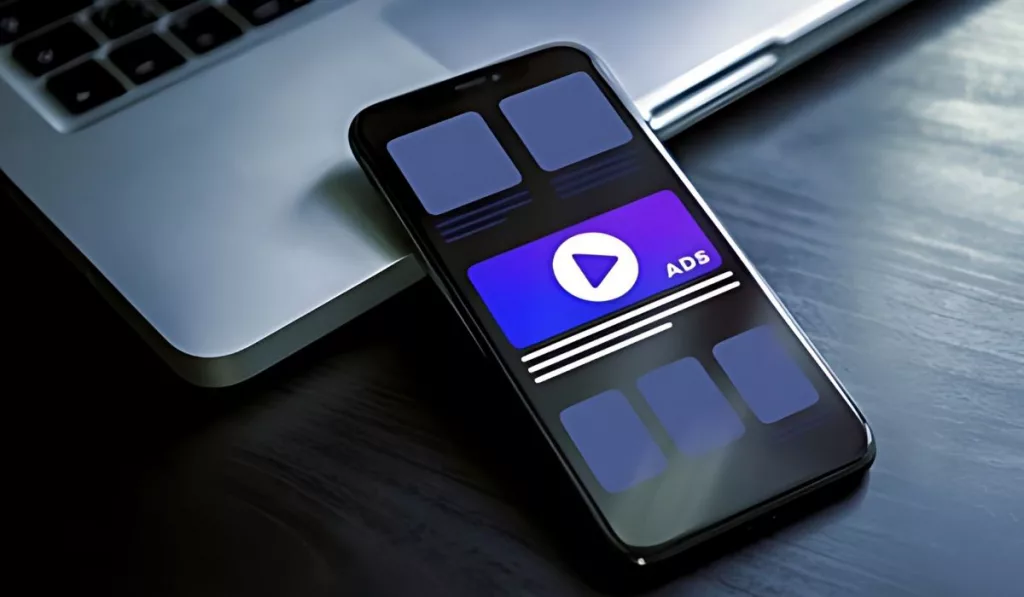
The Advertisement model operates by displaying third-party advertisements within the app, generating revenue based on user interactions such as views, clicks, or actions. This model is particularly suited for apps with high user traffic, translating eyeballs into revenue.
Benefits:
- No Cost to Users: Users enjoy the app’s features without any financial commitment, which can lead to a broader user base and higher engagement levels.
- Profitable with High User Traffic: With a substantial user base, even small earnings per ad interaction can accumulate to significant revenue.
Drawbacks:
- Intrusive Ads: Advertisements can be seen as intrusive, potentially impairing the user experience and the app’s overall appeal.
- Dependence on High User Traffic: The model’s success hinges on high user traffic; without a large user base, the revenue generated may be insufficient for sustainability.
Real-world Application:
WebMD is a sterling example of the Advertisement model in action. This health information app showcases health-related ads, thus creating a revenue stream while providing valuable information to its users.
Also read: The Importance of Information Technology in Healthcare
4. The Pay Per Download Model: An Upfront Commitment to Value
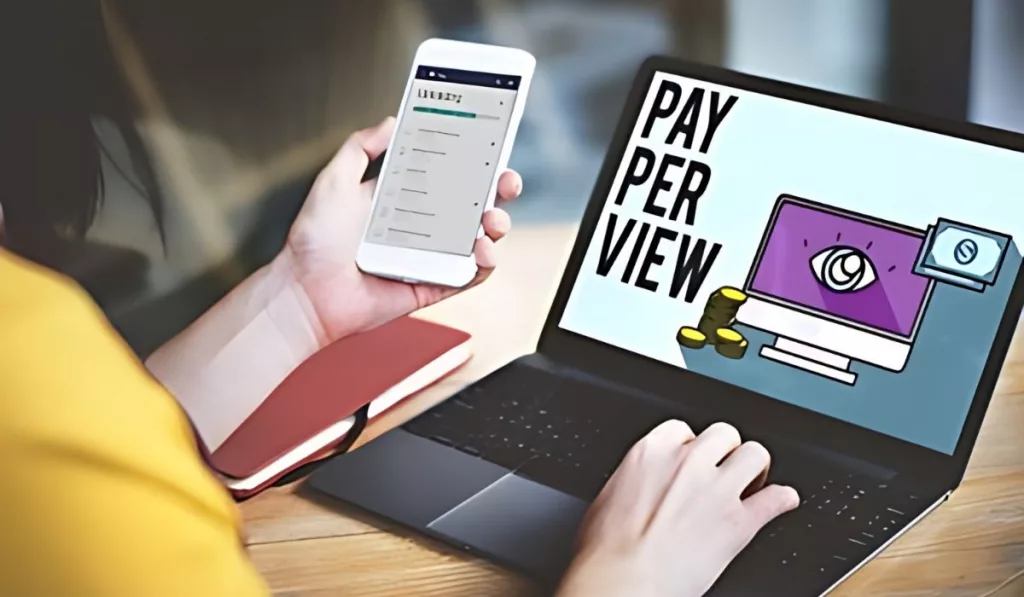
Under the Pay Per Download model, users pay a one-time fee to download the app and access its features. This upfront payment model is straightforward and can provide immediate revenue to the developers.
Benefits:
- Immediate Revenue: Developers receive revenue as soon as the app is downloaded, providing immediate financial resources.
- No Long-term Commitment: Users appreciate the one-off payment, with no recurring fees causing concerns.
Drawbacks:
- High Upfront Cost: The initial cost may deter potential users, especially in a market inundated with free or lower-cost alternatives.
- No Continuous Revenue: Unlike subscription models, the Pay Per Download model doesn’t provide a steady stream of revenue over time.
Real-world Application:
An exemplar of this model is Instant Heart Rate, which charges a one-time fee for users to access its heart rate measuring features. This upfront fee model ensures users have lifetime access to the app’s functionalities.
5. In-App Purchases
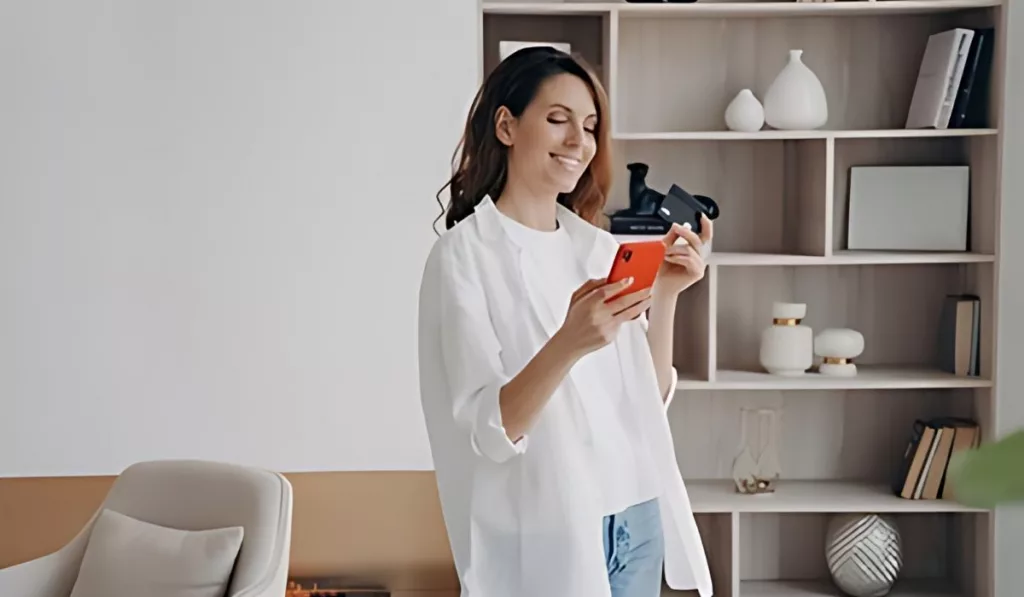
In-app purchases are like the small stores within a store where users can buy additional features or services. They allow users to buy subscriptions or additional features within the app. When a user feels the need for a feature that’s outside the basic functionality, they can make a purchase within the app to access it. This could range from advanced analytical insights, more comprehensive health trackers to personalized workout plans like those offered by Fitbit.
Advantages
- Customizable User Experience: Users only pay for what they need, making the experience highly personalized.
- Increased Revenue Potential: With every additional feature, there’s a potential for increased revenue.
Disadvantages
- User Resistance: Sometimes, users might find it annoying to make micro-transactions.
- Continuous Content Development: There’s a need for regular content or feature updates to keep the income flowing.
Also read: How can mobile health apps improve the healthcare industry?
6. Sponsored Content

Sponsored content is when a third-party pays the app owner to display their content within the app.
Working Mechanism
Companies pay to have their content, products, or services featured within the app. For instance, Healthline hosts specialized content sponsored by other healthcare companies.
Advantages
- Additional Revenue: It’s a straightforward way to earn money.
- Partnership Opportunities: Opens doors for potential partnerships.
Disadvantages
- Trustworthiness: Users might question the credibility of sponsored content.
- Maintaining Relevant Content: There’s a need to keep the sponsored content relevant to the audience.
7. Affiliate Marketing

Affiliate marketing is about promoting others’ products and earning a commission for every sale made through the app. Apps can host links or ads for third-party products or services. When a user makes a purchase through these links, the app earns a commission. MyFitnessPal, for instance, hosts affiliate fitness products.
Advantages
- Low-risk Monetization: No upfront investment is required.
- Significant Revenue Potential: The revenue can scale with the user base.
Disadvantages
- Trust and User Base Size: Trust may erode if users feel the app is too salesy, and a large user base is needed for significant revenue.
- Diversion from Core Offerings: It might divert attention from the app’s primary services.
You may also like: Future of IoT in Healthcare: Medical Industry Innovations that will Change the Game
8. Data Monetization
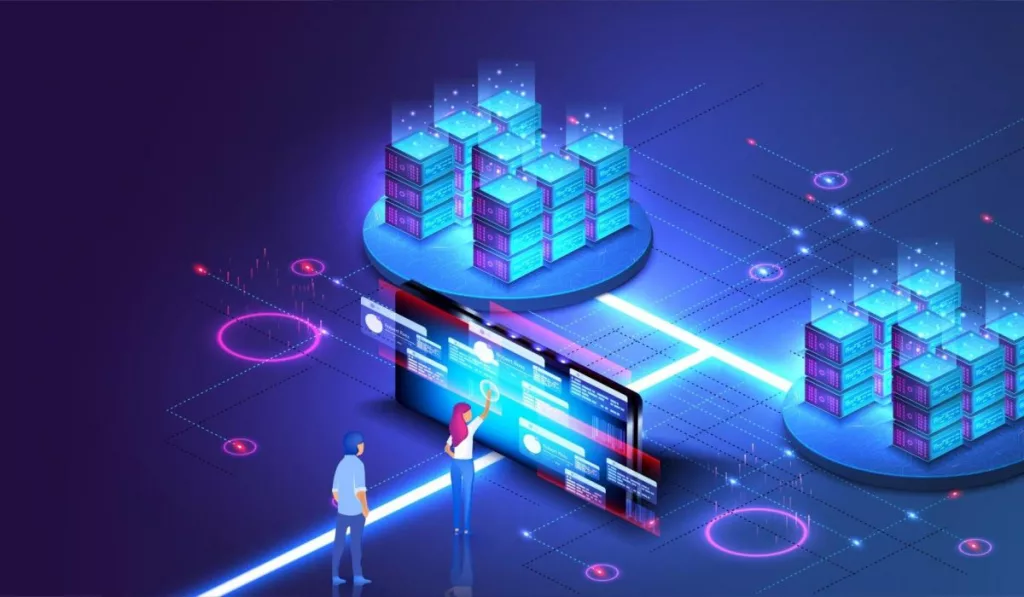
Data monetization involves selling or leveraging user-generated data to drive revenue. Apps collect and analyze user data, which can then be sold to interested parties. For instance, 23andMe monetizes genetic data.
Advantages
- High-value Data: Health data is invaluable and can fetch a good price on the market.
- Little to No Impact on User Experience: Users often don’t notice any difference in app functionality.
Disadvantages
- Privacy Concerns: Data monetization can raise serious privacy issues.
- Legal and Ethical Considerations: There are many legal hoops to jump through, which requires a robust legal framework.
9. Hybrid Models

Hybrid models combine various monetization strategies to create a more resilient revenue stream. It’s all about mixing and matching the above models to suit the app’s and users’ needs.
Advantages
- Diversified Income: Multiple revenue streams can cushion against market volatility.
- Reduced Dependency: Not being reliant on a single monetization strategy is safer.
Disadvantages
- Execution Complexity: Implementing and managing multiple monetization strategies can be complex.
- Potential Diluted User Experience: Too many monetization strategies might clutter the user experience.
10. Healthcare E-commerce

Healthcare e-commerce refers to the online selling and buying of medical products and services. This domain encompasses a variety of entities including online pharmacies, telemedicine services, and digital health app marketplaces.
Advantages
- Accessibility: Healthcare e-commerce bridges geographical gaps allowing individuals in remote areas to access medical products and services.
- Convenience: The ease of obtaining medical necessities from the comfort of one’s home cannot be overstated.
- Informed Decision-making: Online platforms provide a wealth of information that helps customers make informed decisions regarding their healthcare needs.
- Cost-Effectiveness: By eliminating several operational costs associated with brick-and-mortar setups, e-commerce platforms can offer competitive prices.
Disadvantages
- Privacy Concerns: The handling of sensitive medical data online always carries a risk of privacy breach.
- Regulatory Hurdles: Adhering to the myriad healthcare regulations across different regions can be quite challenging.
Example
Practo is an excellent illustration of healthcare e-commerce in action. This online marketplace connects patients with local doctors and specialists, allowing them to book appointments online. It simplifies the process of finding and booking healthcare providers, bringing e-commerce ease and convenience to the healthcare sector.
How to monetize Healthcare Apps?
So, you’ve cooked up this awesome healthcare app and now you’re itching to turn this brainchild of yours into a money-making machine, huh? Well, you’re in luck. Grab a cup of coffee, get comfy, and let’s dive into the nitty-gritty of monetizing your healthcare app, step by step!
Step 1: Know Your Users
First things first, know who your users are and what they need. Are they fitness freaks, patients with chronic conditions, or stressed-out folks in need of meditation? Understanding your audience is the cornerstone of any monetization strategy.
Step 2: Choose The Right Monetization Model
There are several ways to milk money from your app. You can choose any from In-app purchases, Subscriptions, Ads and Sponsored Content, Affiliate Marketing, E-commerce, Data Monetization, and Donations. Please check from above what suits you the most.
Step 3: Set Fair Prices
Don’t scare away your users with sky-high prices. Keep it fair, keep it competitive, and make sure the price tag matches the value offered.
Step 4: Smooth User Experience (UX)
Nobody likes a clunky app. Ensure your app is user-friendly, the interface is clean, and the experience is smooth. Happy users are more likely to shell out some cash.
Step 5: Test and Optimize
Run tests to see what works and what doesn’t. A/B testing is your friend. Optimize your strategies based on the feedback and data.
Step 6: Promotions and Discounts
Throw in some discounts or promotional offers. Everyone loves a good deal!
Step 7: Stay Legal
Healthcare is a tricky field with lots of regulations. Make sure you’re compliant with the law, especially when dealing with sensitive health data.
Step 8: Keep Improving
The digital world is ever-changing. Keep an eye on the latest trends, get feedback from your users, and never stop improving.
Step 9: Promote Your App
Make some noise about your app. Use social media, blog posts, and other channels to draw more users in.
Step 10: Monitor and Analyze
Keep a close eye on your app’s performance, user engagement, and revenue streams. Use analytics to understand what’s working and where you need to improve.
Also read: How Medical Billing Services Can Help All Types of Medical Practices
Final Words
The monetization of healthcare apps is a nuanced endeavor that requires a deep understanding of the user experience, market dynamics, and a visionary approach toward delivering value. As healthcare apps continue to proliferate and evolve, so too will the strategies to monetize them, paving the way for a sustainable and user-centric digital healthcare ecosystem. Through thoughtful monetization, healthcare apps can continue to play a pivotal role in fostering a healthier and more informed society in the times to come.










Leave a Reply